8 essential gardening jobs for May to get your outdoor space summer-ready
Tick off these tasks from our list of gardening jobs for May, full of useful tips from the professionals

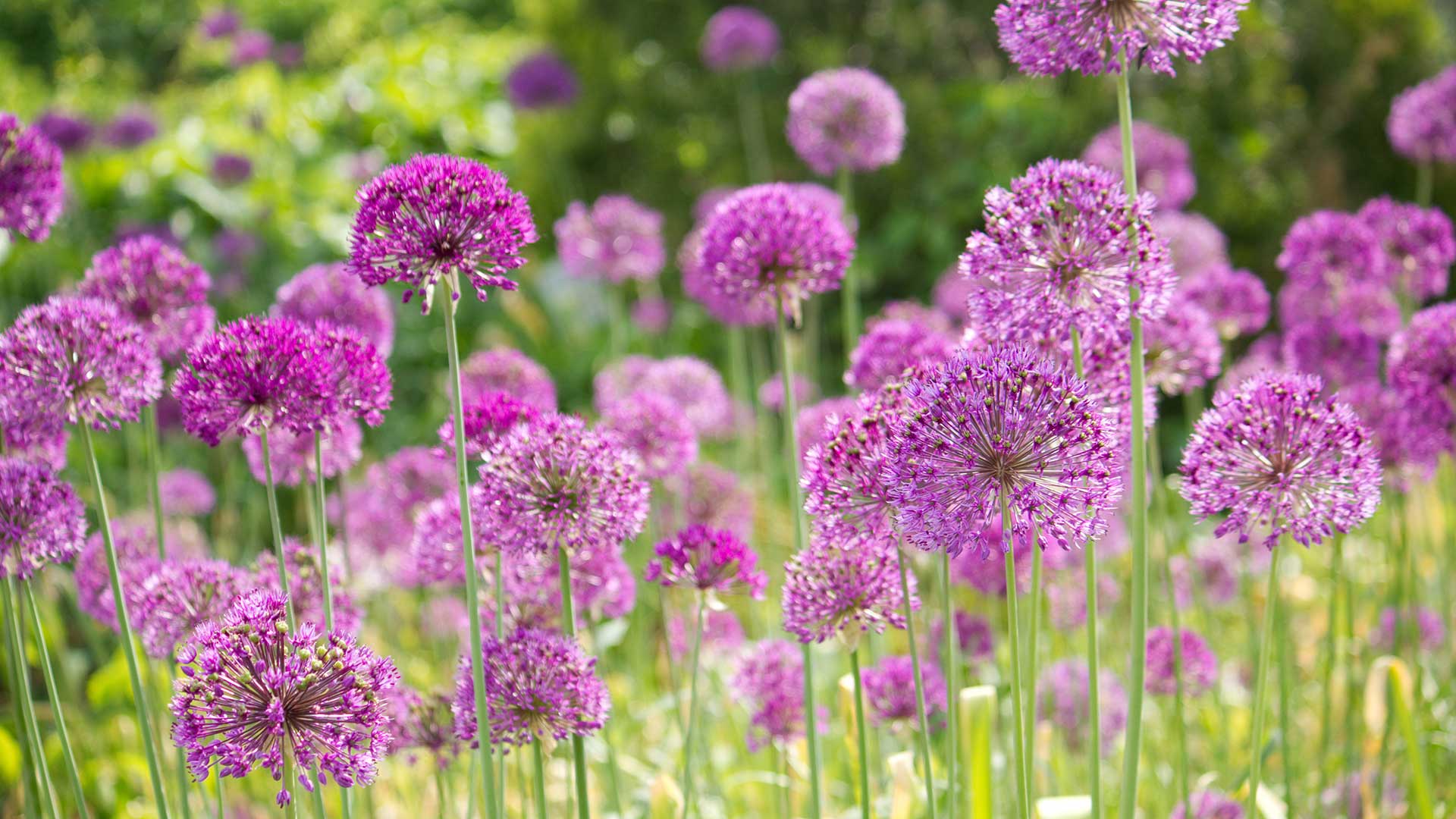
It's time to get on top of your gardening jobs for May – and there are plenty to be getting on with. Our outdoor spaces may be brimming with new, green life, but for a spectacular show that lasts all summer long, there's no time to rest on our laurels.
The risk of frosts has usually passed by now. This means May's a prime time for planting all sorts of fabulous flowers and crops, inspired by your favourite garden trends. It's also worth knowing what to do with faded spring bulbs, grubby patios, and later-blooming herbaceous perennials that have already started into growth.
Below, industry professionals share their top tips on what to do this month, alongside plenty of practical advice. Ticking these off is well worth the effort, and is a great opportunity to get out in the sunshine.
8 key gardening jobs for May, with expert advice
Having the right tools always makes gardening jobs easier. If you don't have one already, it's a good idea to invest in a quality trowel for new plantings, as well as a sturdy pair of secateurs for pruning this month and beyond.
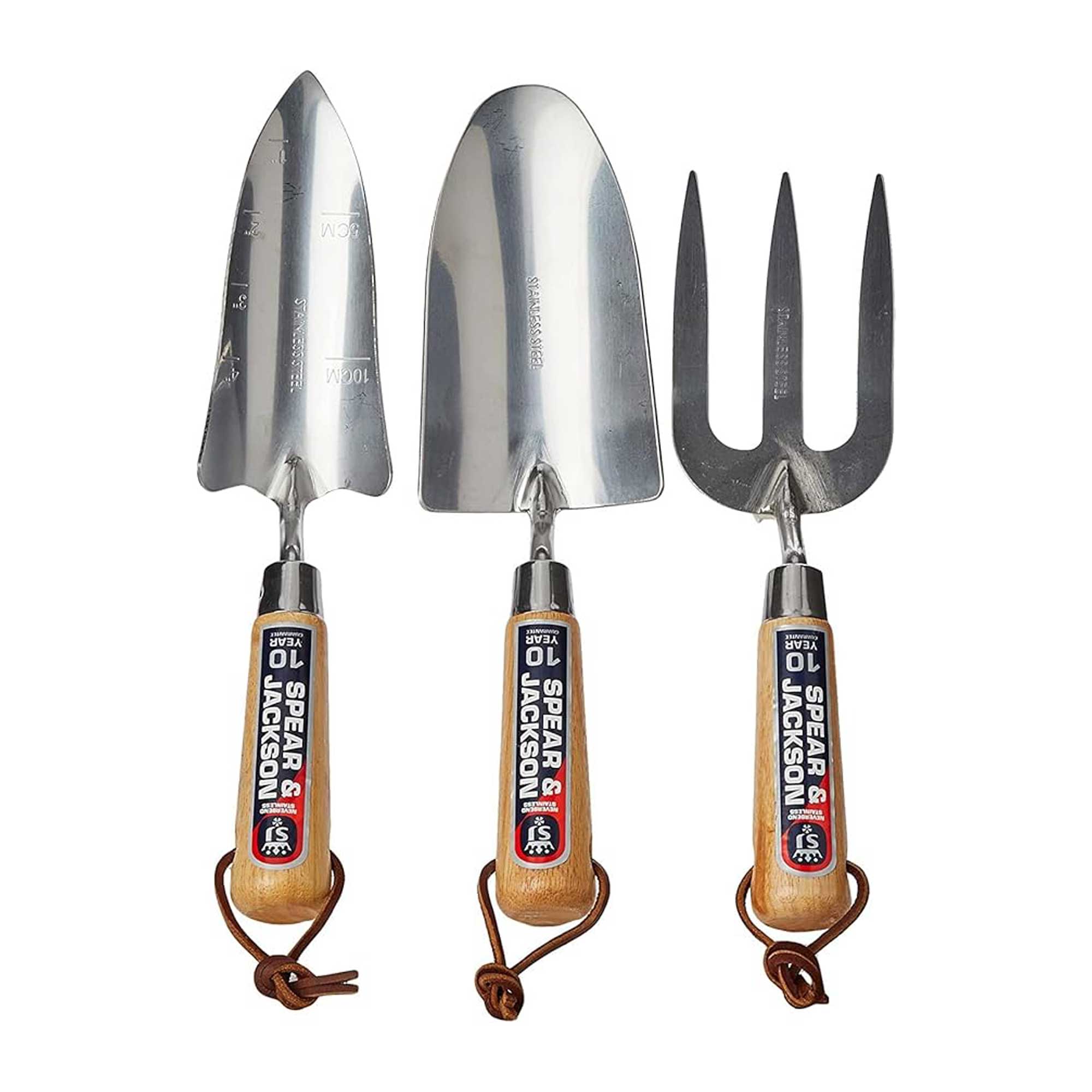
This best-selling set includes a weeding fork and two types of trowel, each with a rust-resistant stainless steel head and a hardwood handle.
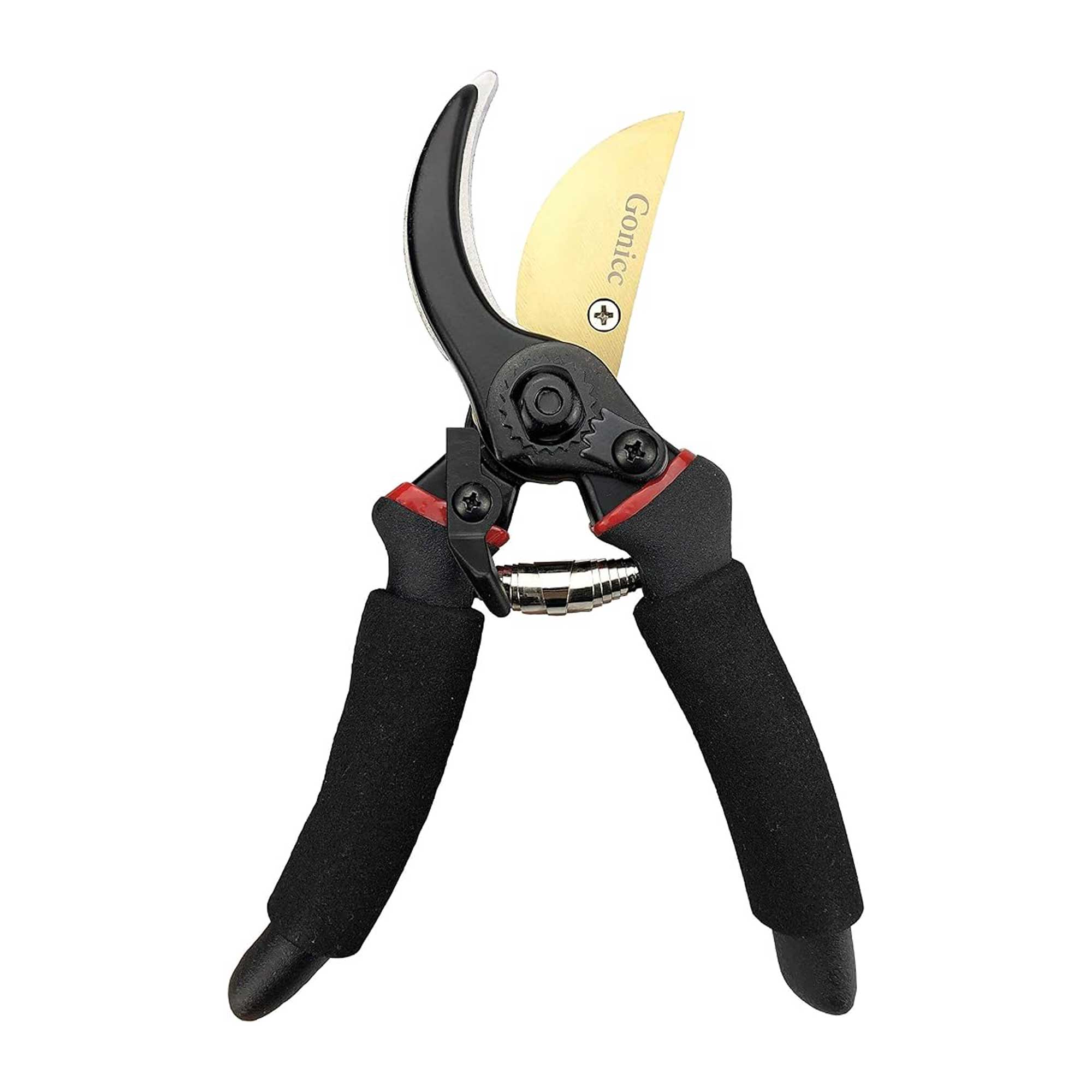
Prune, deadhead, and snip flowers for indoor displays with these popular bypass pruners, which have a titanium steel blade.
1. Sow veggie seeds outdoors
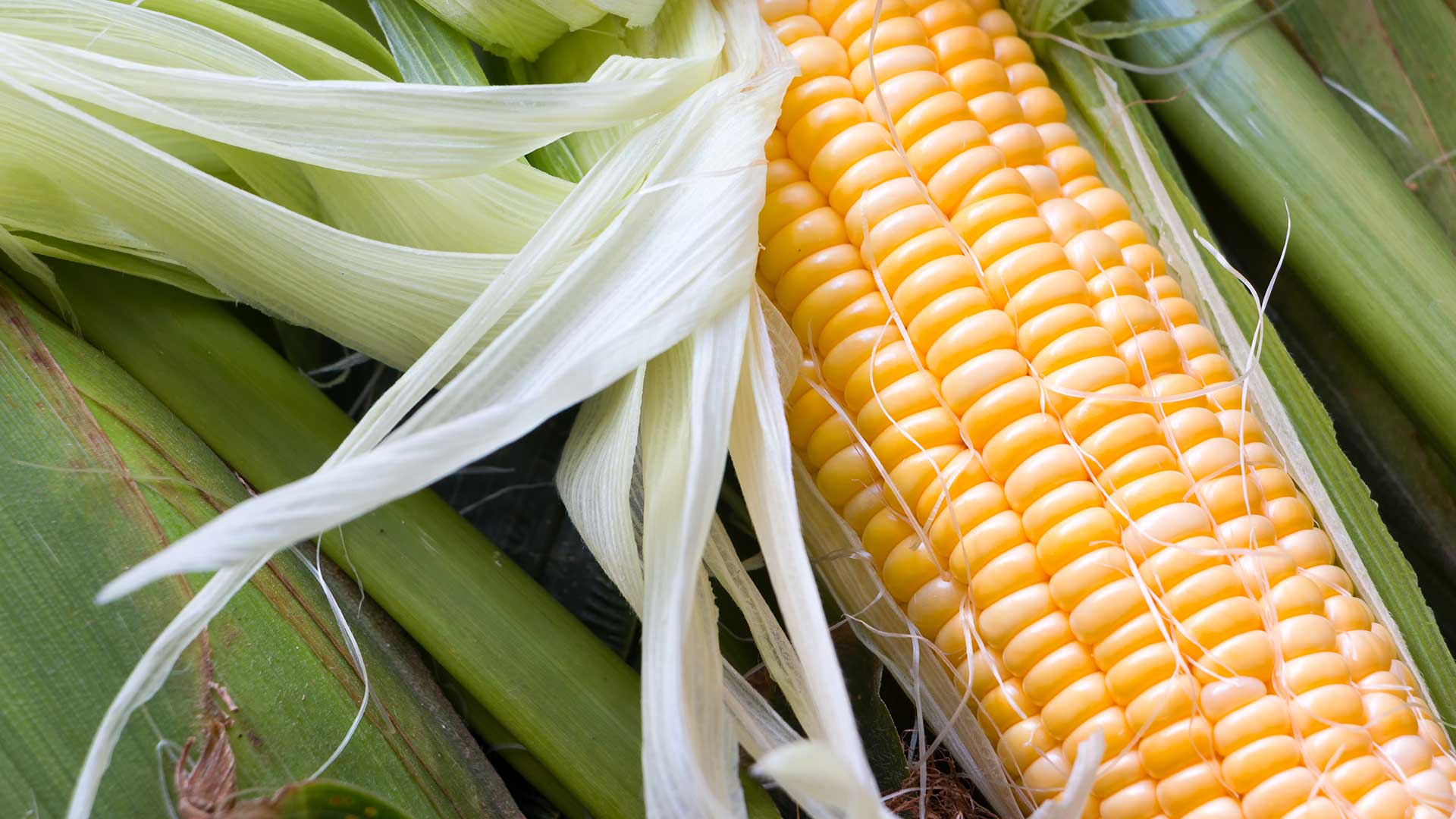
You can sow sweetcorn outdoors this month
Whether you're a total beginner at vegetable gardening or a seasoned pro, there's lots to do this month. Gardening expert Sarah Raven says, "Now’s the time to direct sow warm-season crops such as French beans, sweetcorn, squash, pumpkins, and carrots straight into the ground."
Water daily after sowing to keep the compost from drying out – seeds must stay consistently moist to germinate well.
“It’s also worth directly sowing basil alongside tomato seedlings in May," she adds. "The basil helps draw white flies away from the fruit, and as we all know, tomato and basil are a match made in heaven once harvested.” The basil collection, available from the Sarah Raven website, includes two delicious varieties – one a classic green, and one a pretty purple.
Sign up to our free daily email for the latest royal and entertainment news, interesting opinion, expert advice on styling and beauty trends, and no-nonsense guides to the health and wellness questions you want answered.

Since the publication of her first book, The Cutting Garden, Sarah Raven has led the way in introducing a new kind of productive gardening. She aims to create intense colour and beauty with a practical and easy-to-achieve approach. Sarah’s love of gardening extends to all areas, from growing cut flowers and delicious vegetables from seed, to designing stunning gardens packed full of variety, colour. Her popular gardening podcast, Grow, Cook, Eat, Arrange, is continually #1 in the Apple Home & Garden chart. She’s published 15 books and runs sarahraven.com, which serves over 900,000 customers.
2. Harden off young plants
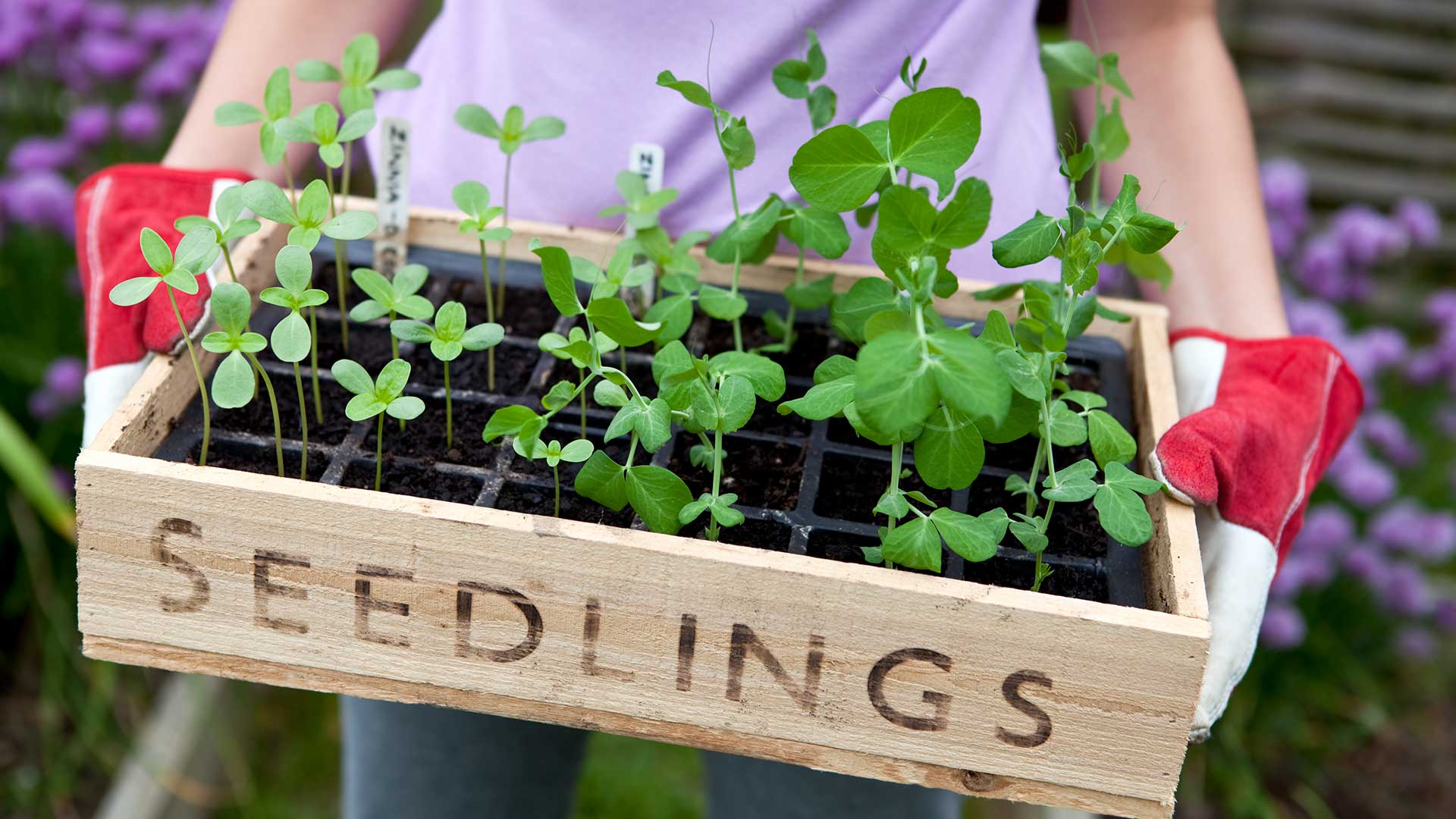
Acclimatise young plants before putting them in their final outdoor positions
Were you busy planting vegetables in April, or perhaps earlier, to give them a head start undercover? "If you’ve been raising seedlings in your greenhouse, now’s the perfect time to start hardening them off," says Sian Napier, a spokesperson for Gabriel Ash.
"Gradually expose them to outdoor conditions by placing them outside during the day and bringing them in at night for about a week or two." She recommends starting them off somewhere shaded and protected from strong winds, then exposing them gradually to sunlight.
Alternatively, you could invest in a cold frame, "which is ideal for this gradual exposure". This can be placed on raised beds, she says, where you can leave the top open during the day to allow for further ventilation.
Hardening off is worth the effort, as it helps the plants adjust to their new outdoor environment. "If you bring plants out too soon, the shock can lead to stunted plant growth," Sian warns.

Sian studied horticulture in 2010, based at Hestercombe House and Garden in Somerset. After successfully completing her diploma, she embarked on a varied career that encapsulates her true passion. This consists of gardening, designing gardens and writing as a spokesperson for luxury greenhouse brand, Gabriel Ash. Sian firmly believes that spending time outside in nature contributes to our health and wellbeing and is always happiest pottering about in her greenhouse.
3. Cut back herbaceous perennials

Heleniums are one type of perennial bloomer that can be cut back now
“Cut back late-flowering herbaceous perennials in May," says Sarah. To do so, she recommends dividing the stems into thirds, then cutting the first third down to a third of their original length.
The next third of stems can be cut down to two-thirds of their length, she says, and leave the last group of stems untouched. "This tried and tested method increases the overall flowering season, providing gorgeous blooms all summer long."
There are a few other plants to prune in May, too. Be sure to use sharp and clean secateurs to help keep them healthy.
4. Plant summer bulbs
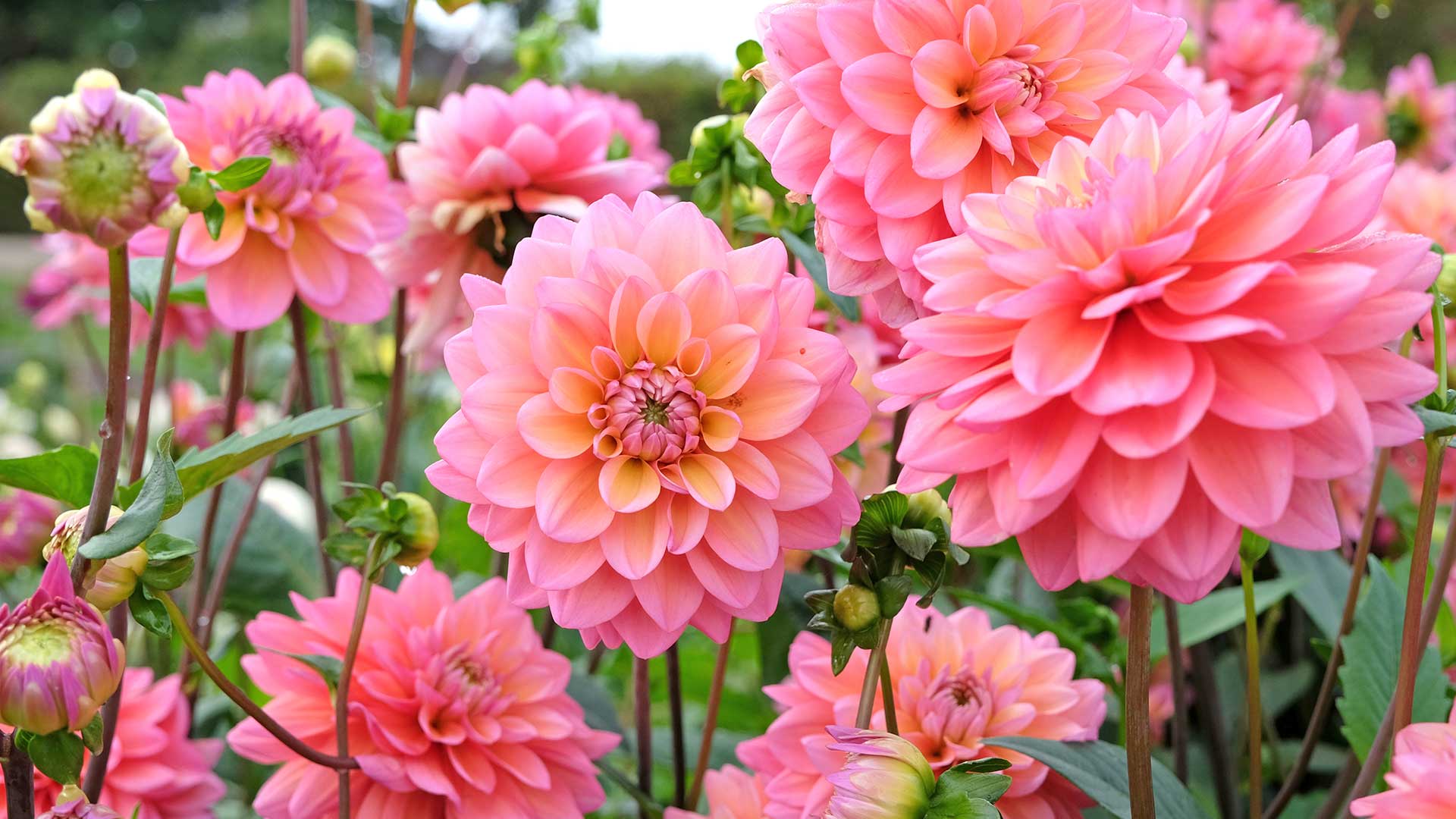
Dahlias are must for late-summer colour
Preparing for the months ahead is a big part of gardening. For a gorgeous display later in the year, don't forget to get your summer bulbs planted now, if you haven't started them indoors already. "May is the time of year when soil temperatures have warmed sufficiently and the risk of frost has passed, so it's an ideal time to get planting," says Sian.
Be sure to choose somewhere with good drainage, and remember that most plants like plenty of sun. Once planted, Sian recommends applying a layer of organic mulch around them to help retain moisture, suppress weeds, and improve soil structure as we head into the drier months.
There are plenty of summer bulbs to choose from, including dazzling dahlias (although these are technically tubers). These will give you late-summer flowers that continue well into the autumn. Crocus has a huge and colourful dahlia range.
5. Care for spring bulbs correctly
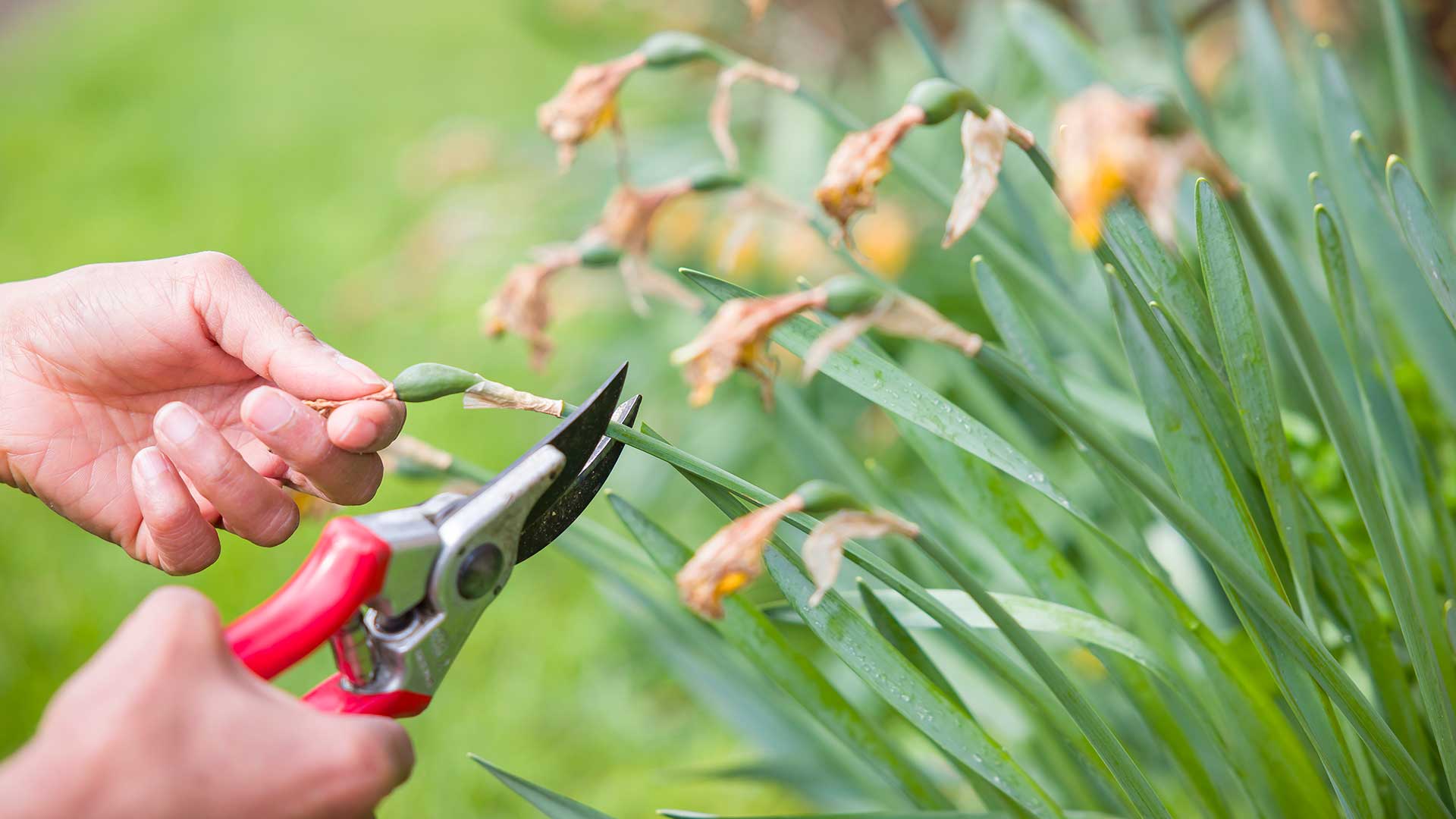
Remove spent daffodil flowers, but leave the foliage
Early spring bulbs will have finished blooming by now, but don't be tempted to cut them right back. Instead, Sarah recommends leaving the foliage to die and break down naturally.
You can, however, deadhead daffodils and the like for a neater appearance. This will also prevent plants from wasting energy by creating seed heads, Sarah says.
The leftover foliage will continue to feed the bulb, which encourages a good display for next year. You can help with this further by applying a fertiliser.
6. Make the most of alliums

Ornamental alliums make a sculptural statement
One type of bulb that will still look fabulous is the allium. “Alliums are at their peak of flowering in May, so make sure you cut a few stems to make a stunning vase display indoors," says Sarah.
She shares a useful tip for making the cut flowers last longer: add a drop of vinegar to the flowers' water. "This is a natural way to slow down the stems' ageing, which will help reduce the oniony smell," she says.
Consider leaving flowerheads intact once they've finished blooming in your garden. They add architectural appeal to the landscape while being beneficial for wildlife, particularly later on in the year.
7. Sow biennials
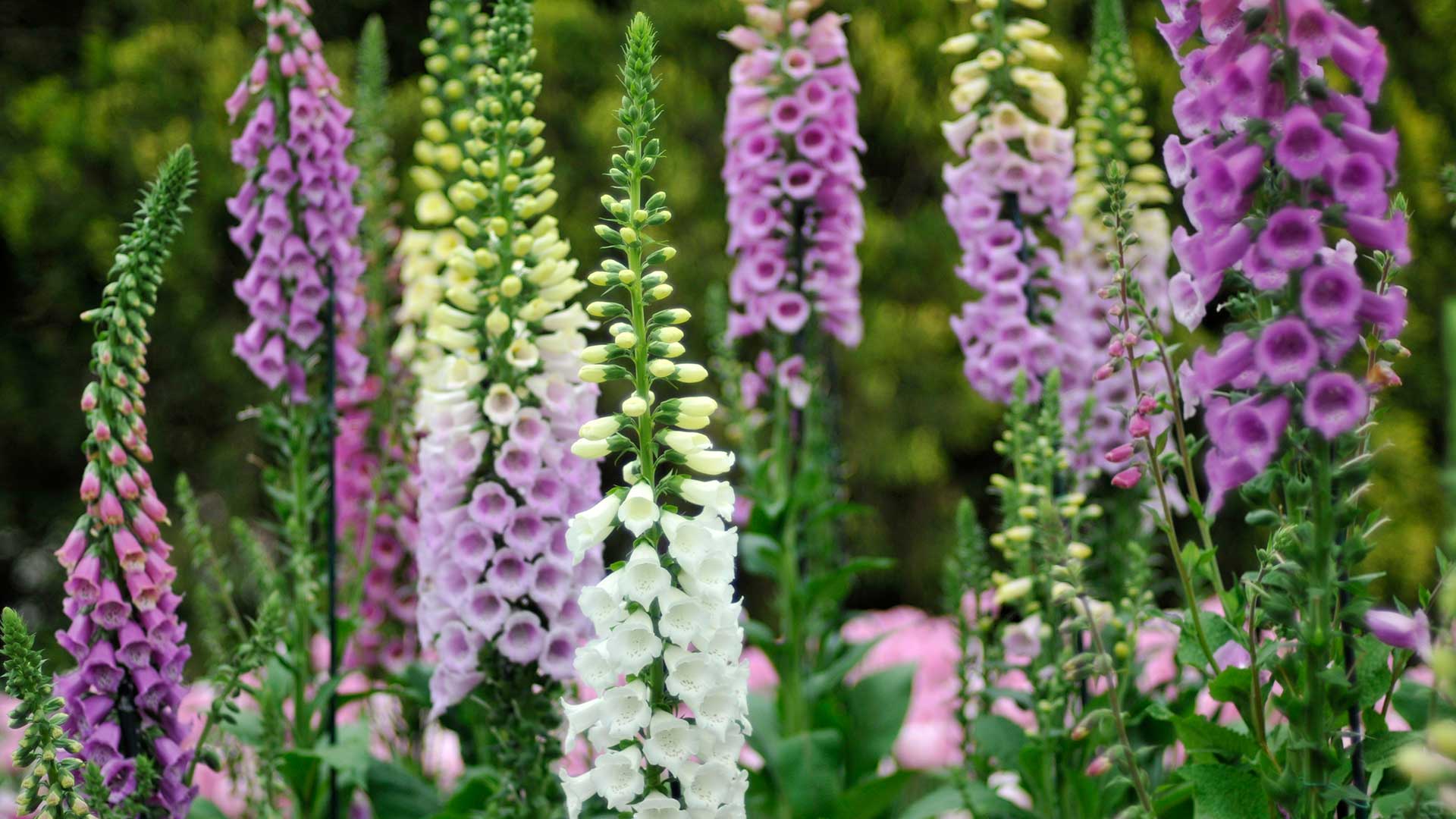
Sow foxgloves now to enjoy the tall blooming spires next year
Biennials (which flower in their second year) are sometimes overlooked. But, there are a good few gorgeous options for a garden, including foxgloves and honesty.
If you're growing them from seed, Sarah recommends sowing them now, then they will fill next year’s garden in late spring and early summer. This particular time of year can sometimes feel a little gappy, before the summer plants really find their stride, she adds – so you'll be pleased with your past actions.
Start them off in a greenhouse in seed trays for more control over their growing environment, being sure to keep them somewhere bright and the soil moist.
Try planting these white-flowered foxglove seeds from Sarah Raven – a perfect addition to a cottage garden. Just be sure to wear gloves when handling, as all parts of foxgloves are toxic. For this reason, keep them safely out of reach of children and pets, too.
8. Spruce up your patio
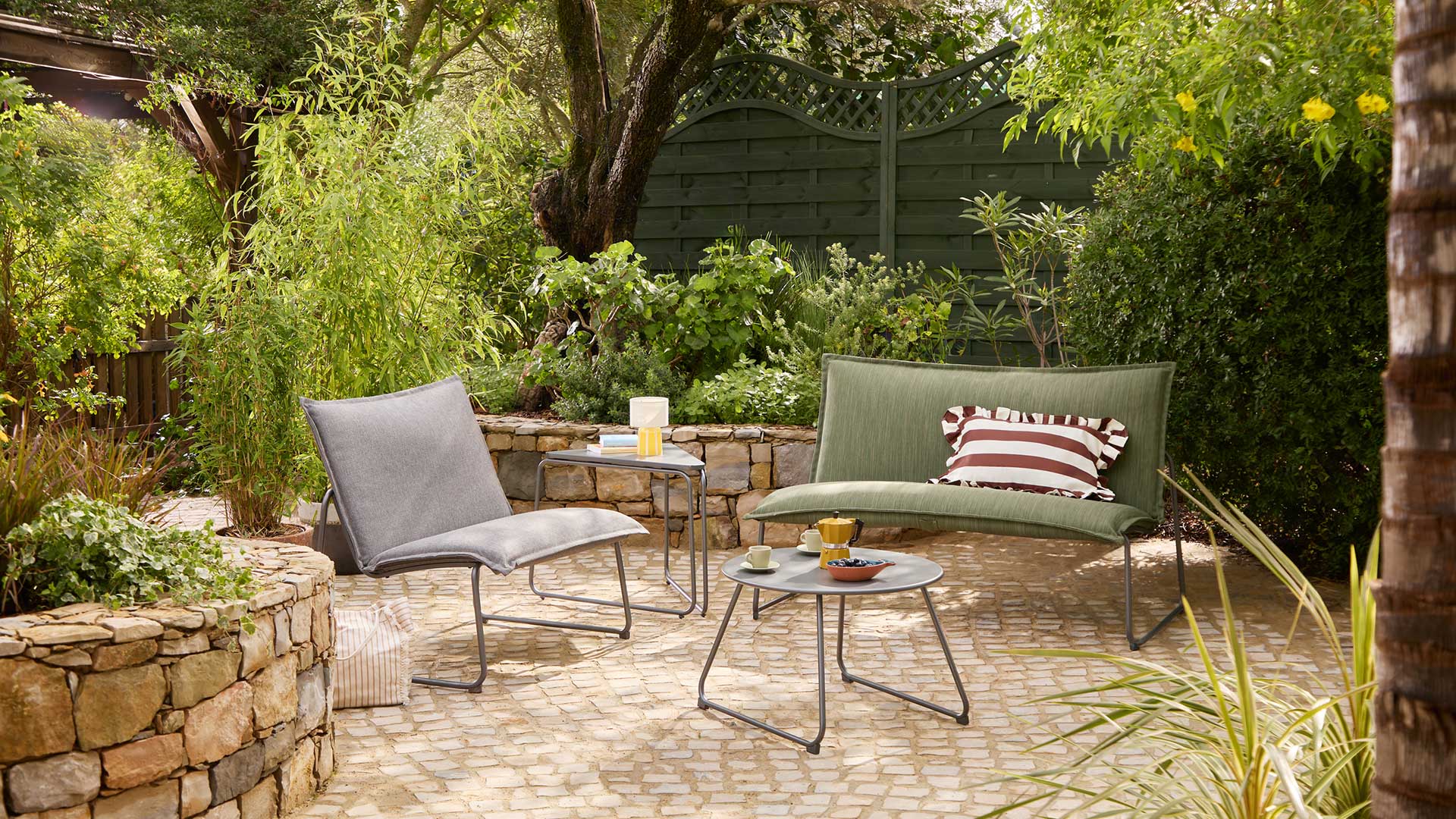
A chic setup from Dobbies
It's not all plant care to tick off this month. Now the weather's warmer, it's worth checking out your patio, too. After all, summertime BBQS and garden parties are only just around the corner.
"Whether they are made of natural stones, brick, or concrete slabs, patios are susceptible to mould, algae, lichen or weed growth from the wet winter months," says Dr Jonathan Kirby, Roxil’s garden expert. "This can quickly make even the most meticulously installed patio or driveway look unkempt."
While a pressure washer can produce impressive results in the short term, frequent use can cause long-term problems such as surface erosion, damage, and weak points in the slab, and can destroy mortar joints, he warns. Instead, he recommends getting rid of larger weeds to start, before cleaning your patio slabs.
This can be done by leaving a patio cleaner on the surface for 24 hours (such as Roxil Wood & Patio Cleaner, available from Amazon). "Then, use a wet, stiff brush to loosen any stubborn patches of mould, algae and dirt, before washing away the debris."
He also suggests waterproofing the surface using a patio weatherproofing cream, such as Roxil Patio Cream (also available from Amazon), as weeds and biological growth need moisture to grow.
FAQs
What lawn care is needed in May?
If you love a traditional, manicured stretch of green in your garden, there are plenty of lawn care gardening jobs for May to be getting on with. Jane Fairlie, technical development manager at Doff Portland (a manufacturer of premium garden care products), recommends tackling moss and weeds in your grass.
"Rake out dead moss and treat problem patches with a weed killer," she says. "Regular mowing will encourage thick growth. If you spot sparse areas, overseed with a good-quality lawn seed. Lightly water the area first, apply the seed, press down gently and avoid mowing over new patches for a couple of weeks. If it’s dry, water in the early morning or evening to help seeds establish."
She also recommends applying a liquid lawn feed weekly. "Regular feeding will promote healthy, green growth throughout the season."
Alternatively, you could opt for a more hands-off approach, or even try "no mow May", which is more suited to the rewilding garden trend.
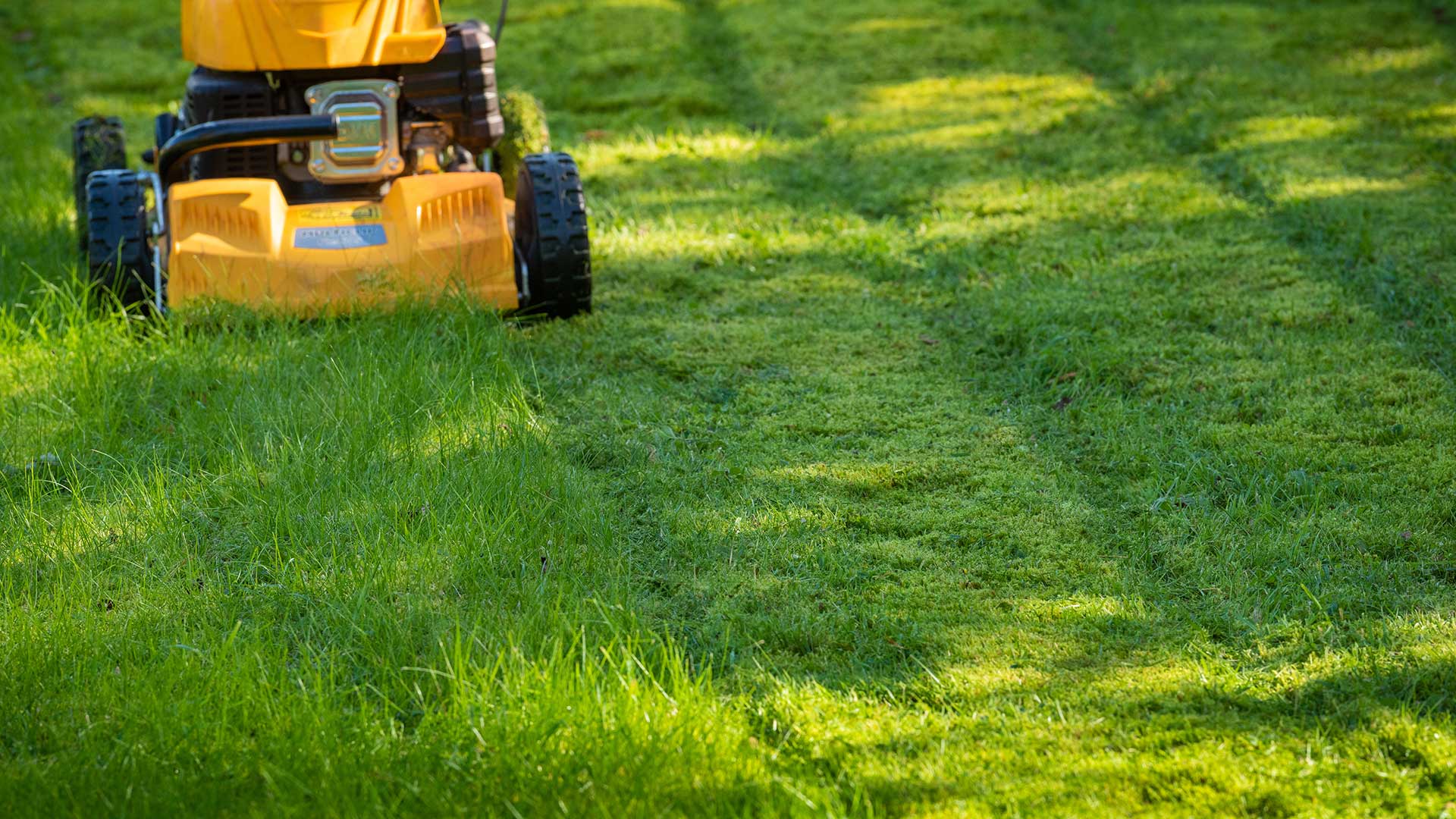
Plenty of maintenance is needed for a neat lawn over the warmer months
Is May a good time to refresh your garden decking?
Yes, with the drier weather and warmer days, May is a good time of year to protect your decking and get it looking its best for the upcoming summer season.
Jimmy Englezos, senior brand manager at Ronseal, says there are three primary options available when it comes to decking protection. Decking paint is best used on older decking, he says, as it can hide any old marks or scuffs under a layer of colour.
Decking stain is used on relatively new wooden decks, as it will help brighten up the natural colour without covering up the wood grains, he continues. And finally, there is decking oil, "best suited to refreshing grey-looking decking as it will penetrate the wooden decks to help nourish and revive the natural colour."
Before you get started, you'll also want to clean your decking to get rid of any dirt and debris from winter – our guide explains how.
As we shift into the warmest part of the year, it's also worth getting familiar with summer gardening mistakes to avoid accidentally damaging your precious plants.

The garden was always a big part of Holly's life growing up, as was the surrounding New Forest where she lived. Her appreciation for the great outdoors has only grown since then; she's been an allotment keeper, a professional gardener, and a botanical illustrator. Over three years ago, Holly started writing about plants and outdoor living full-time, first for Gardeningetc.com and now for popular lifestyle titles such as Homes & Gardens.